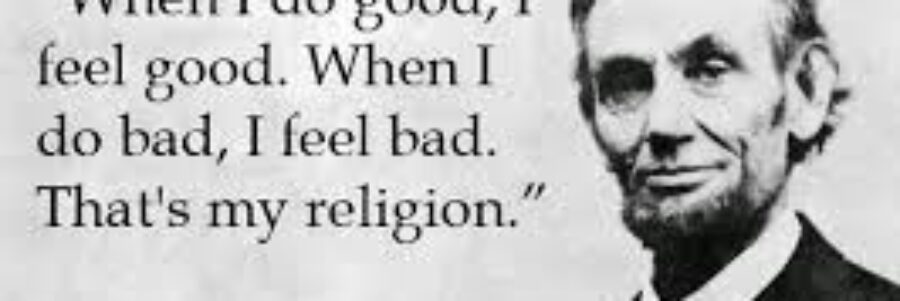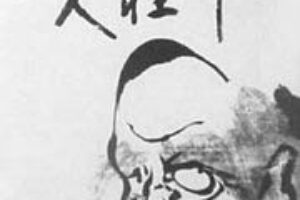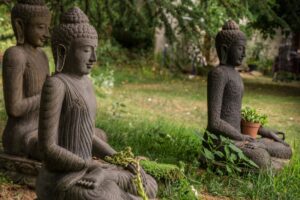Part 1

The great teachings of Buddhism fall into two main categories: description and prescription. Many of the ancient texts and utterances of the Ancestors are descriptions of reality, such as Suzuki Roshi’s “Things as it is” or Matsuoka Roshi’s “Round and rolling, slippery and slick.” It is difficult to impossible to apply these directly to our practice, as they reflect a view that follows from insight. Many misunderstandings are of this nature, where we may think that things as it is means things as they are, and therefore the right understanding is that which we already have. But things as it is means things as they really are, not as we suppose them to be from our everyday perception and conception. When things as they are fall apart through meditation, they can be reconstituted as “Things as it is.”
Other teachings, such as the Precepts, are prescriptions for practice, though they may, by implication, hint at a description of reality. So the Ten Grave Precepts are often represented, in the ceremonies of receiving Precepts (J. jukai), as the precepts of buddhas and bodhisattvas, a description of the natural way of life of an enlightened being. Yet they are simultaneously prescriptions for our practice in all aspects of daily life. It is understood that all such teachings are provisional, and that when they reach fruition, will no longer be prescriptions for our personal practice, but will describe our reality.
…do no harm, is the mother of all Precepts.
zenkai taiun elliston, roshi
Another way to look at Precepts is to understand that everyone already has received certain precepts—from their parents, peers, teachers and society at large. These may be unconscious, but people still act, and see their world, based on them. For example, everyone, by the time s/he reaches the age of reason, has a pretty complete set of cultural precepts, about killing, lying, stealing, et cetera. Receiving the Precepts of Buddhism may raise these subliminal ones to consciousness for the first time, by presenting, as they do, an alternative view.
Further, all larger associations of human beings behave according to precepts, implicit or explicit. The medical profession, for example, shares the first Precept “Do no harm.” Business and industry operate based on their own precepts, as do governments and other institutions, such as educational systems. Entire cultures subscribe to precepts, whether their members know it or not. So it may be illuminating to look at American culture in the context of Buddhist Precepts.
The first, do no harm, is the mother of all Precepts. All other Precepts are essentially specific case examples of this one general principle. The difficulty comes when we realize that we cannot “do no harm” in any absolute sense of the phrase. In some situations, avoiding harm to one person may involve harming another person, as in the Jataka tale of Buddha killing a man who was killing others. Just to exist is to do harm, in the sense of consuming other living beings. But without attempting to resolve all the contradictions, we may be able to usefully look at the broad-brush picture. It raises more questions than it provides answers, which is very Zen.
Since it has been suggested that these dharma bytes be more of a bite and less of a meal, in this installment I will comment briefly on only the first five of the Grave Precepts, those given to Soto Zen Initiates.
Affirm life—do not kill is a difficult one, probably why it comes first. How does the current culture look, when held up to the light of this prescription? Where does the exercise of war, the factory farming of livestock, fit in? How do the abortion and end-of-life issues find resolution? How about hunger, ethnic cleansing and natural disasters, on the global scale? Why do we once again find ourselves cauterizing the gaping wound that is Haiti, decades of time for prevention having slid by? This is not a rant—I’m just asking.
Be giving—do not take what is not freely given seems more obvious, but when we look at what has happened to the livelihood of working Americans, the daily outrage and lack thereof, political posturing and finger-pointing, e.g. over Wall Street running roughshod over Main Street, we have to wonder: Are those profits freely given?
Speaking of profits, Google just reported quarterly earnings of 2 billion dollars, a new record for one quarter. That is twice as much as so far invested in the recovery efforts in Haiti by several entire countries (including poverty-stricken Liberia, which, poignantly, could only spare around 50 thousand dollars). Nation states have always been seen in Buddhism as empty—conceptual projections of the non-existent self. But now, international corporations are clearly eclipsing what once were the economic powers and governmental entities of the world.
Accelerating the trend in America, with the recent 5-4 ruling of the Supreme Court, corporations now have more-than-equal rights than actual citizens to invest in the political process. Given their massive reserves of capital (now recognized as “free speech”), many pundits predict that this will surely further erode the influence of government by, for, and of, the people.
Again we have to ask: Are these rights, and the power that they confer, freely given? If so, by whom, to whom—and on behalf of whom?
Honor the body—do not engage in sexual misconduct again seems obvious, but if you surf the Internet you will find that not in your wildest dreams could you come up with so many variations on the theme of sexual conduct. And that is only in the human species! Which of these behaviors constitute misconduct? When is sexual conduct not misconduct? Some would suggest that when it leads to procreation, or when it is sanctified by marriage, it’s OK. Would it were so simple.
This may not be so much a matter of defining misconduct as it is an exercise in the right conduct side of the Noble Eightfold Path (which amounts to another set of prescriptions for practice). Therein we find speech, action, and livelihood as three dimensions of ethical conduct. It seems transparent that at bare minimum, right conduct would at least be internally consistent. But when we look unflinchingly at our fellow Americans (and in the mirror), especially at the purveyors of ethics and morality in the American culture, we see the opposite. Speech often has little or nothing to do with action or livelihood, other than to deflect attention or throw up smokescreens. We talk the talk but do not walk the walk. We don’t do what we say.
At least if we were honest and forthcoming about what are called sexual indiscretions, they would not be. It is understandable why many of the Ancestors of Buddhism practiced celibacy. It is so much simpler.
Manifest truth—do not speak falsely is directly related to the point about speech and action. But when we look at the culture, where do we see the truth being spoken, e.g. to power, as the popular expression has it? Who knows the truth, let alone is able to speak it? Is it actually possible to not speak falsely? In saying anything about anything, one necessarily leaves out the rest of the story. Is a partial truth still true?
It is like a snapshot. The camera excludes infinitely more than it can include, in the picture. Same for a written piece, such as this, or an editorial in the newspaper (a printed document that people used to have delivered to their doorstep, or pick up at what was called a “newsstand”). The window is much too small to make room for the whole truth.
This is why Buddha often fell back on the expedient mean of saying nothing. It was called his “golden silence,” expressing the truth far more eloquently and accurately than all the 80,000 sutras combined.
Proceed clearly—do not cloud the mind with intoxicants also seems pretty cut and dried. We are either sober or we are not. But Master Dogen pointed out that when we take the tonsure (shave the head) we are already intoxicated.
When we look at our culture (and ourselves in it) we see that everyone is already intoxicated, by different intoxicants. There are the usual suspects, so-called identified addictive substances, such as alcohol and drugs. People who imbibe are seen as inferior to the sober citizens who are on the straight and narrow. It is less obvious that they, the latter, are also intoxicated—by power, fame and fortune, status and prestige, comfort, a higher standard of living, a sense of superiority over others—reinforced by all the above, et cetera, et cetera, et cetera, as the King of Siam (no piker at living large) would intone at this point in the dissertation.
Tellingly, the definition of an addictive substance (google AMA) includes that if withdrawn from the addict, it occasions a “significant degree of discomfort.” Try that with air, water, food, warmth, shelter, et cetera… Significant, all right—in about five minutes without air, days without water, weeks without food.
In other words, we are addicted to life. We are all addicts, and that should give us pause in looking down upon those pitiful, identified addicts, who simply pile another addition on top of what is already addiction. It might also help if professionals in the business of “treating” addicts (usually unsuccessfully) were to recognize this fact. Compassion means suffer with, together.
As to proceeding clearly, Zen meditation is a form of deep and thorough withdrawal. It is a process of completely sobering up, in the midst of addiction.
Personally, I resent the pejorative use of “cloud,” my dharma name. Mind is a cloud.
Next time we will take a look at the latter five Precepts, those reserved for Zaike Tokudo. If you would like to respond and comment, I would like to hear from you: Just what kind of utopia you feel might be possible, based on the precepts and prescripts of Buddhism?
Gassho,
Hojo









